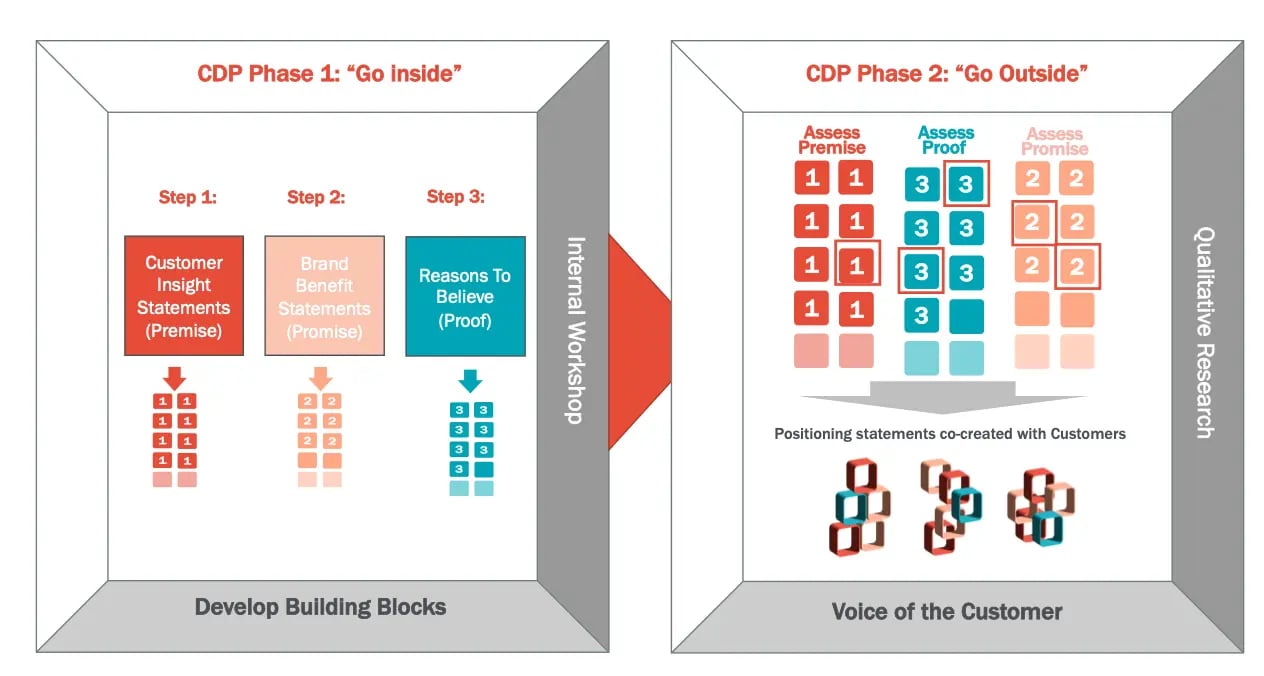Our Thinking
Customer-Driven Positioning: A Marketing Research Platform to Inform Better Brand Strategy

For the first 15 years of my marketing research career, most of my work was in anti-viral medicines, with a particular focus on the revolutionary new antiretroviral treatments that emerged between 1995 and 2015 that transformed HIV/AIDS from a death sentence into a chronic manageable illness. The experiences I had, and brilliant collaborators I worked with during this period, led my team and I to pioneer several novel and truly customer-first marketing research methodologies, including the one detailed in this article.
During the mid-2000’s, our research revealed that people living with HIV sought new medications that were not only effective in shutting down the virus, but also that could help them almost “forget” that they had HIV. Individuals living with HIV resented the constant reminder when taking their pills that they had a potentially fatal illness occupying their bodies. They also felt a distinct hatred of the virus, as though it was an uninvited, malevolent guest they couldn’t get rid of.
With this notion in hand, we advised the brand team we were collaborating with at the time to re-think their cornerstone positioning insight to capture this authentic customer emotion. Instead of the need being, “I want to reduce my viral load down to undetectable,” we harnessed the sentiment that “I want to attack the virus” since this reflected a more authentic emotion that these individuals were feeling. Instead of “I want a more convenient medication,” our recommended insight was “I want something that will allow me to put HIV for the most part out of my mind.” These individuals wanted to live their lives normally again, unfettered by the constant reminder of the virus.
The promise we landed on, “Living Unencumbered,” became a powerful cornerstone and rallying cry that drove an effective campaign and ultimately a multi-billion-dollar brand’s success for years to come.
This and similar experiences are indicative of the broader truth increasingly faced by marketers not only of pharmaceutical brands, but any brand. This truth is that the brand is no longer what we (as marketers) say it is. It is, instead a result of what our customers - physicians and patients especially - think about it, do with it, and tell their colleagues and friends about it. Faced with this commercial reality in 2023, how should pharmaceutical marketers approach the task of developing and testing brand positioning, which is arguably the most important and fundamental organizing principle of brand strategy?
Our response is that there is an eminent need for a marketing research technique that puts the customer at the forefront and in the driver’s seat, makes them the hero, and genuinely allows them to co-develop the positioning concept with the brand team.
Customer-Driven Positioning (CDP) is a testing platform that was hatched in the back room of a marketing research facility by our team and a client collaborator – a Vice President of Marketing for a prominent West Coast based pharma company. In observing that physicians evaluating an array of launch positioning statements were just “not getting it,” our frustration led us to propose adopting a “bottom up” approach to really understand what would resonate about the brand through the eyes of the customer.
“Let’s take these positioning statements apart,” we distinctly recall being said during our back-room dialogue, “and let respondents examine each part individually, so that we can better find out how we can make this brand about them, and not about us.”
Our team’s response in striving to address the frustration was to reimagine how we would present the alternative positioning statements. In doing so, we inverted the framework from focusing on our product, to focusing on the customer. This became the basis for CDP, a straightforward and effective framework that brings the customer onto the brand team. CDP generates insights by identifying the territory where a brand meets customers’ spoken, but more often unspoken, unmet needs that form the basis of an effective brand position.
In the years that ensued, the CDP methodology transformed into a kind of marketing research “laboratory” where brand teams and their agency partners could assess a range of hypotheses to provoke customers, all with the aim of elevating their own understanding of customers’ true ambitions and aspirations, and how the brand helps the customer become the protagonist in better managing a disease condition.
Having pioneered CDP, our team has applied this methodology successfully for over 50 pharmaceutical, biotech and medical diagnostic brands, both in new product launch situations and in-line brand repositioning. This article will outline, step-by-step, how to establish an effective customer centric brand positioning in a competitive, omni-channel medical marketplace.
Think Differently from the Start
Break the Habit of Focusing on the Product First and the Customer Second
One observation that we have had over years of working closely with brand teams and their advertising agency partners is that when the team starts to formulate branding strategy and positioning ideas, some bad habits often arise. And it’s not surprising why this occurs: after a Phase III (or even a Phase IIb) readout, the team and their agency are confronted with an ocean of complex product data. The natural tendency is first to deal with the product and to try to distill the evidence into a simple story that they can use to speak about it with stakeholders internally and externally.
What we often find is that while the team has a surface-level, structural grasp of what the customers are doing and thinking, largely based on other research like buying process, patient journey, and secondary analytics, they don’t really know who they are -- their context, their beliefs, their automatic and unconscious habits or behaviors, and what makes them tick. If our brand positioning is meant to be aspirational, we need to be thinking more about our customer’s ambitions than our own.
An Internal-External Process that Focuses First on Customer, then the Product
CDP is broadly a two-phased internal-external engagement process. This is because the best positioning ideas are discovered somewhere in between the brand team’s experience, thinking and intuition, and the deep, unspoken needs of customers.
The first phase of CDP is to conduct a “go inside” workshop, tapping into the team’s intuition. After completing the workshop, the second phase is to “go outside” by leveraging the customer’s perspectives through external voice-of-the-customer qualitative research.

The Workshop -- Step #1 (Develop Customer-Insight Statements)
The first thing we do during the initial positioning workshop is draw three side-by-side consecutive squares on the white board, and say aloud, “This whole thing isn’t about you – it’s about your customer!” The customer is square one. Instead of first addressing the question, what is our story, we advocate that the team proceed from the standpoint of: what is our customer’s story?



